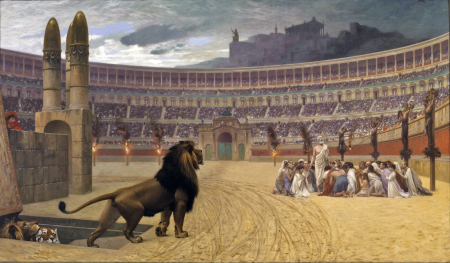is the new testament reliable?
2. Were the Gospel writers willing to tell the truth?

There are numerous factors that indicate that the Gospel writers were interested in telling the truth regarding what they recorded instead of simply trying to embellish and convince their readers of their narratives.
1. The writers of the Gospel were firmly rooted in the Jewish Faith and had certain theological and cultural views that they held to with strong conviction. When they became followers of Jesus they had to be willing to change these long held beliefs and practices. Some of the beliefs that they had to give up were the following:
A. The belief that the Messiah would come to conquer and set up his kingdom, not to die on a cross. When Jesus died on the cross, this was the significant factor that caused them to feel so hopeless and defeated.B. The ultimate authority of the Law of Moses now had to surrender to the Lordship of Christ.C. The Sabbath day of worship changed from Saturday to Sunday, the day of the resurrection of Christ.D. The unity of God – “Hear O Israel, the Lord our Lord is One” – Deuteronomy 6:4. Now they embraced and understood that the One God of Israel is a unity but He is also a plurality – Jesus is God Who became a man.E.
The temple sacrifice system which was the heart of the Jewish Faith is now fulfilled in Jesus Christ’s work as the Lamb of God.These disciples and early Jewish believers, some of whom were priests, scribes and Pharisees, left these beliefs and convictions for what they knew to be true. The miracles and teachings of Christ certainly had a profound effect on them, but the resurrection from the dead was the sealing witness that convinced them of the truth of Who Jesus was. These writers and eyewitness believers of the Gospel gave up these cherished institutions and beliefs and this is a powerful evidence for their sincerity.
2. The writers did not leave out derogatory statements that were directed at Jesus. They left details in their testimony which were very hard to believe for those to whom they were writing and in some cases they put Jesus in an embarrassing position. The fact that Jesus’ family thought that He was losing His mind – Mark 3:21,31. His own brothers did not believe in Him ( Mary His mother is never included in this description) – John 7:5. He was called a “madman” –John 10:20. He was referred to as “demon possessed” – Mark 3:22, John 7:20; 8:48. He was called a “drunkard” – Matthew 11:19.The writers of the Gospel included material that they knew would not be well received by people in the first century, but they included it because they wanted to convey the truth and not just attempt to place Jesus in the best possible light. This is what people do who are telling the truth.
3. The writers report information that does not provide the best advantage for the most important witness in the Gospel – the witness of the resurrection of Christ. The four Gospels all state that it was women who first found the empty tomb. Women in the first century had no legal weight in regard to their testimony. They were considered unreliable and untrustworthy witnesses and yet the writers of all four Gospels place women as the foundational first witnesses to the resurrection of Christ. This would not be the best way to make your case if you were devising a plan to convince people that Jesus rose from the dead, but this is exactly what they did. Mary Magdalene was the first to witness the risen Jesus Christ and according to Luke she is the one to whom Jesus cast out seven demons – Luke 8:2. Using women and a formerly demon possessed woman as your primary basis of witness would not be a good idea unless you were wanting to tell the truth.
4. The writers of the Gospels include numerous details about their failures, doubts, foolishness and cowardly ways which is something that you would not do if you wanted to impress your readers and make the case that you are a reliable and intelligent witness. They recorded their foolish prideful actions and their inability to minster in difficult situations – Mark 9:18,34. They indicated that they were doubters – John 2:18-22; 3:14-18; Matthew 12:39-41; 17:9, 22-23.They are depicted throughout the crucifixion as cowards who denied Jesus – (Peter) Matthew 26:33-35 and ones who fled in Jesus’ darkest moments – Mark 14:50. They slept in the garden while Jesus suffered – Mark 14:33-42. Their honesty and willingness to tell the truth regarding their own failures adds credibility to their ability to tell the truth regarding the other details of the Gospel most importantly, the resurrection of Christ.
5. The writers of the Gospel were disciples of Jesus Christ and were taught His teaching regarding the high value of truth. The teachings that these writers conveyed in their writings were based on the absolute importance of telling the truth. It is unlikely that these men could stand for the truth and live noble lives (willing to die for what they believed was true) and then fabricate “Gospel legends”, unless they were completely corrupt individuals. What motivation and for what possible gain would they lie and fabricate a legend regarding the resurrection? They made no money, never held positions of power, they were beaten, oppressed, imprisoned and died for what? They had no motivation to create a legend and then die for it. It appears from all that they said and from what they stood for, that they were men who believed in telling the truth.
6. The apostolic and early church placed a high value on eyewitness testimony. In Acts, the record of apostolic preaching indicates the high importance of eyewitness sources and in their proclamation of the Gospel, they appealed to events as facts. Acts 2:32;3:15;4:19,20; 5:30-32; 10:39-41; 13:28-31,34,37; 22:!5; 23:11; 26:25,26. ( Luke 1:1-4; John 20:30,31; 21:24; II Peter 1:16-18; I John 1:1-4.)One of the first issues that the apostolic church dealt with was the replacement of Judas, the disciple who betrayed Jesus. They decided that someone needed to take Judas’ place and the criteria for this person was that they needed to have been an eyewitness of Jesus’ life, ministry and resurrection.
“Therefore, of these men who have accompanied us all the time that the Lord Jesus went in and out among us, beginning from the baptism of John to that day when He was taken up from us, (the ascension) one of these must become a witness with us of His resurrection. And they proposed two…” -Acts 1:21-23.The fact that eyewitness testimony was considered important to the church and the apostles, highlights the fact that their desire was to present testimony that was trustworthy and reliable. For them, this was the proper foundation for a factual and truthful historical accounting of the life, ministry and resurrection of Jesus Christ. Usually those who are creating a fabrication do not appeal publically to the eyewitness nature of their testimony and then place such high regard and importance on truthful witness, but this is exactly what the writers of the Gospels did.

7. They were martyrs (put to death) for what they had witnessed and stated to be true. This commitment to the truth was evident in the willingness of these disciples of Jesus to lay down their lives for the testimony that they confessed regarding Jesus Christ and His resurrection. Reliable church history tells us that at least 11 of the key leaders and apostles of Jesus died for their witness for Christ.James – according to the New Testament and the 3rd century historian, Eusebius, James was killed with a sword under the order of Herod Agrippa and was beheaded – Act 12:2. (A.D. 44-45).Peter – according to Eusebius, Peter died a death by crucifixion – (A.D.64).Andrew – according to the late 2nd and 3rd century historian Hippolytus of Rome, Andrew was hanged – (A.D. 70).
Thomas – according to Hippolytus , he was thrust with a spear – (A.D. 70).Philip – according to Hippolytus, he was crucified with his head downward – (A.D. ?)Matthew – according to Hippolytus, he was beheaded (A.D. 60-70).John – according to Hippolytus, he died a natural death however, he was imprisoned and persecuted (A.D. 95-100).Bartholomew – according to Hippolytus, he was crucified with his head downward (A.D. 70).James the son of Alphaeus – according to Hippolytus was stoned to death in Jerusalem (A.D.?)James the Just , the half brother of Jesus, according to Eusebius and Josephus, he was thrown from a parapet of the temple and then stoned to death. (A.D. 62).Paul – according to Eusebius, he was beheaded under the reign of the Roman Emperor Nero (A.D.66,67). See: Eusebius. Church History, page 70.
He records an entire chapter covering the martyrdom of the apostles and early Christian church leaders.It is important to emphasize that human nature has not changed down through the centuries and people then as well as today, will not die for self-made lies or fabrications. People may die for something that they believe is true, however false it may be, but people do not die for something that they know to be false. The disciples and eyewitnesses of the resurrection did not die for a cause, a philosophy or set of ideals. They died for their eyewitness testimony of the resurrected Christ. If they are to be trusted as sane, mentally stable individuals, then their death for the testimony that they professed adds credibility to their claims.